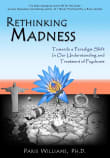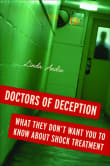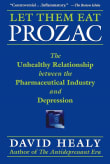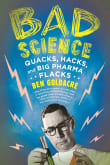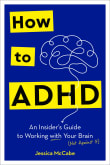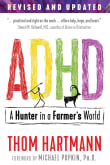Anatomy of an Epidemic

Book description
Updated with bonus material, including a new foreword and afterword with new research, this New York Times bestseller is essential reading for a time when mental health is constantly in the news.
In this astonishing and startling book, award-winning science and history writer Robert Whitaker investigates a medical mystery: Why…
Why read it?
4 authors picked Anatomy of an Epidemic as one of their favorite books. Why do they recommend it?

There is an uncomfortable question in the world of mental health and treatment that everyone thinks about, but no one says out loud: If medicating mental illness with psychiatric drugs was really working, why are people getting worse?
This book examines over fifty years of research to find the answer and comes to a startling conclusion. I think it is the single most comprehensive and explanatory book on the market about the true nature and outcomes of psychiatric drugs and that it should be required reading in all medical schools.
It is also divided into multiple diagnoses (schizophrenia, bipolar, depression,…
From Brooke's list on books every parent should read before taking their kid to a psychiatrist or psychologist.

“That book changed my life”--when interviewing current and former psychiatric patients (and some critical psychiatrists), no book has so often been described to me in this way.
Anatomy of an Epidemic isn’t about forced treatment per se—it’s about the medications used to forcibly treat people today. An award-winning science journalist (and founder of the web magazine Mad in America for which I sometimes write), Whitaker critically examined every existing study of the long-term impacts of common psychiatric medications from antidepressants and ADHD stimulants to lithium and antipsychotics.
He found that, over time, nearly all psychotropics are associated with serious harms…
From Rob's list on involuntary commitment and psychiatric treatment.

I have talked to many individuals who have told me that Anatomy of an Epidemic literally saved their lives. Medical and science reporter Robert Whitaker—whose co-written series for the Boston Globe on the abuse of mental patients in research settings was named as a finalist for the Pulitzer Prize—is also the author of Mad in America, a history of the failure of mental health treatment. In Anatomy of an Epidemic, Whitaker makes a compelling case that the dramatic increases in serious mental illness in the United States are in large part due to the adverse effects of psychiatric…
From Bruce's list on psychiatry for freethinkers.
If you love Anatomy of an Epidemic...

This book may keep you up all night – it is hard to put down! Robert Whitaker challenges us to take a cold hard look at whether conventional psychiatric medications really deserve our respect. If not, why has the public been led to think that the psychopharmacology ‘revolution’ that began in the 1970s would solve mental problems?
Why would I suggest this book for people interested in brain health and nutrition? Because it illuminates the progression over the last 50 years, during which all the previous knowledge of the role of nutrition in brain health was suppressed. And…
From Bonnie's list on improving your brain health.
If you love Anatomy of an Epidemic...
Want books like Anatomy of an Epidemic?
Our community of 12,000+ authors has personally recommended 91 books like Anatomy of an Epidemic.













